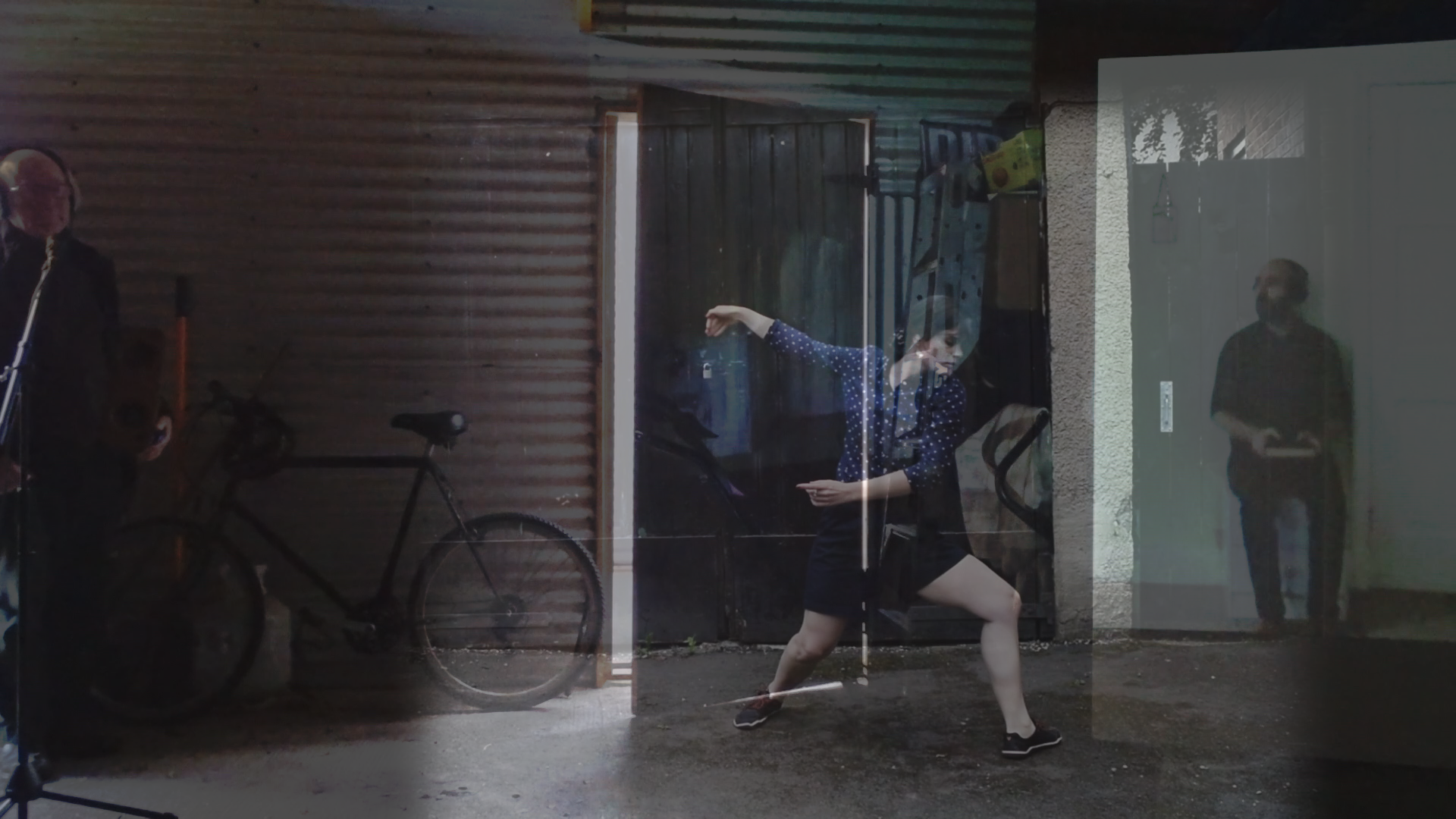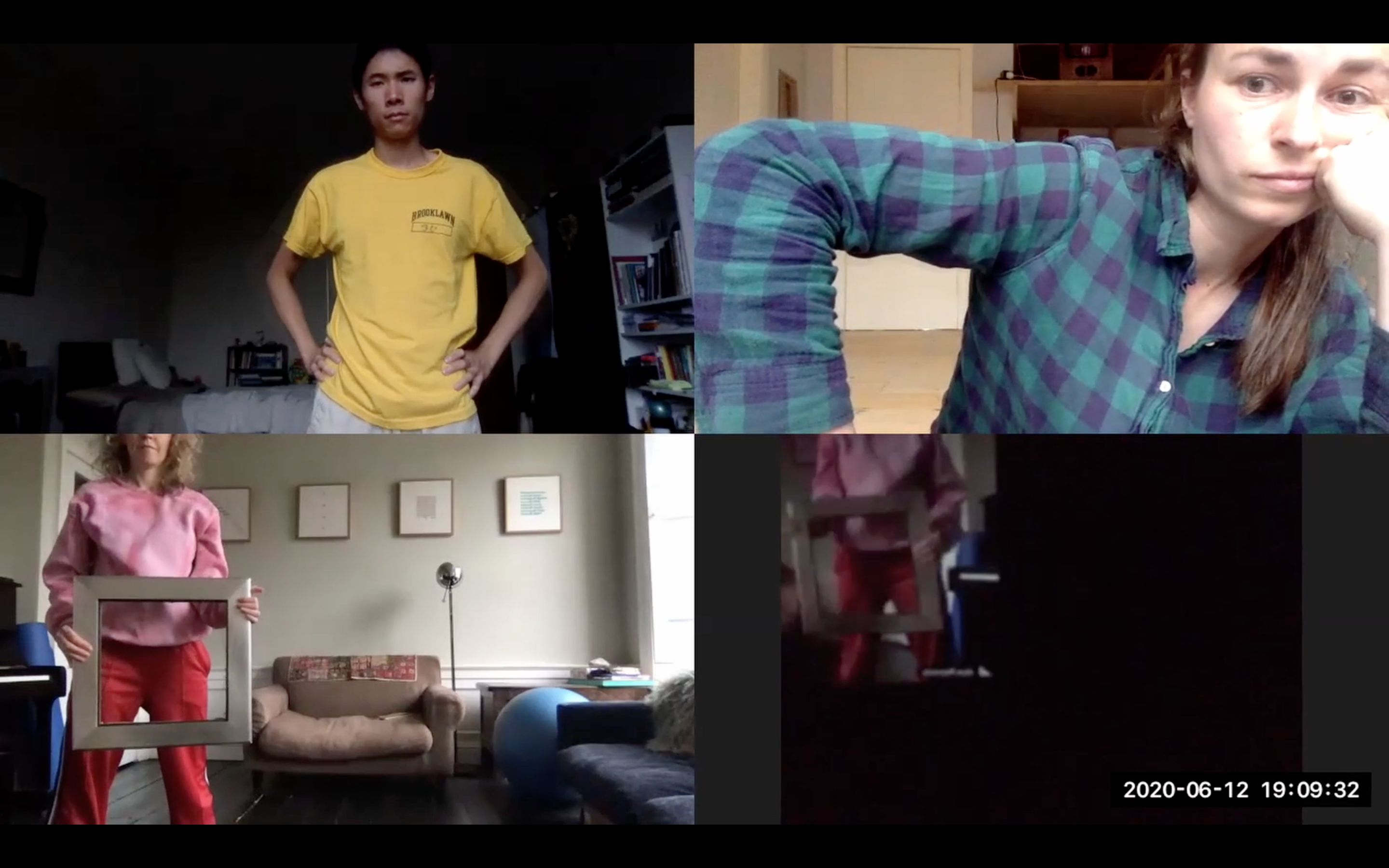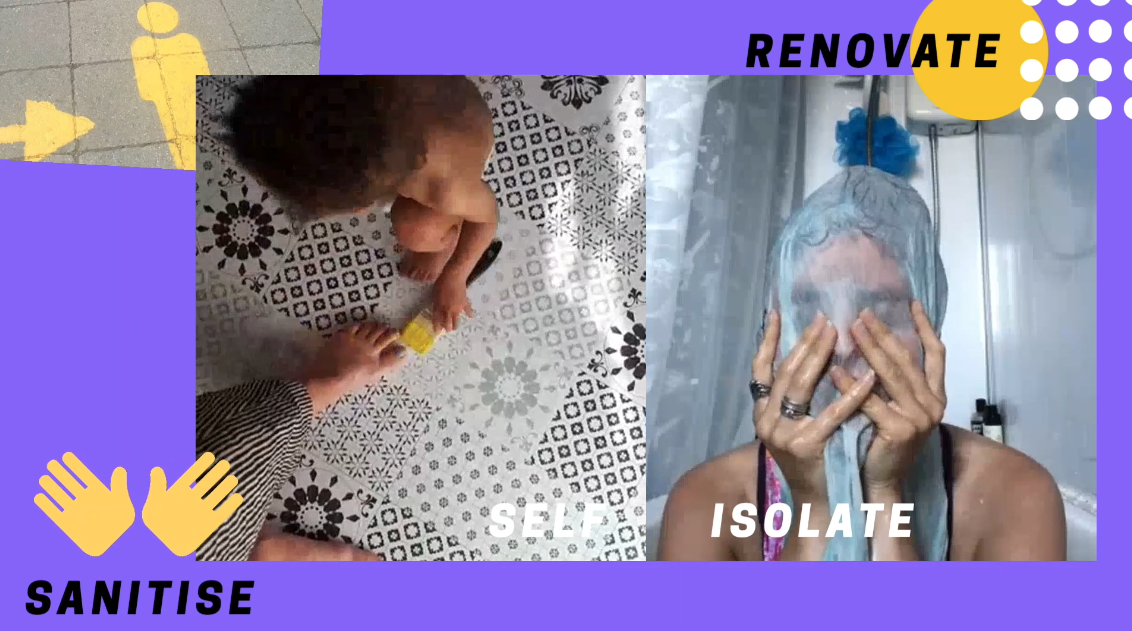Words by Katie Hagan.
EAZ by Zoe Katsilerou and Eilon Morris with Andrew Morrish
Latency. Defined as something embryonic, a becoming on the verge of something. Latency the ‘delay before a transfer of data begins following an instruction for its transfer.’ Caught between two spaces, latency evokes an itchy stasis which we’ve all perhaps lost sleep over these past few months. How long is it now?
The first screen dance in the WIG IV programme of work digitised by improvisation platform ICEBERG, EAZ by Zoe Katsilerou and Eilon Morris with Andrew Morrish looks at the possibility for interaction within a latent, virtual space.
The screen opens with a layered frame holding three bodies — Andrew, Zoe, Eilon — a bike and a door. In a time of dance distancing, each of the bodies has been filmed separately and then tethered together to create this moving image. The speaker, Andrew, guides the two-minute film’s arc, ruminating on latency dripping from red tiles; on hauling yourself from a swimming pool, bone-cold shivering within an echo chamber where things might happen. Zoe ebbs to the words that are spoken alongside Eilon’s mediated plucks of the kalimba, not in a way that seeks to give body to what is ‘happening’ but to what cannot. Zoe’s pace slows when Andrew’s cadence changes. There’s a melancholic discord, an unfulfilled desire to meet which questions the existence of synchronicity, of connection, on a digital sphere.
EAZ is beautifully fractured. There is this unnerving fragility — anxiety, even — about creating dance without any physical touch. Who knows what will occur next? Although there were moments where I fell behind, I put it down to my weakness for dwelling too long on the images my mind’s eye conjures, such as those plump water droplets bursting onto those blood red tiles.

living in rooms by Penny Chivas, Skye Reynolds and Sky Su
The second two-minute vignette in WIG IV, living in rooms by Penny Chivas, Skye Reynolds and Sky Su is a kind of meta-dance aware of its own construct. Three artists each within their frame look hesitatingly into their screens watching, observing, noting. Another, perhaps Skye, asks us to “come a bit closer”.
At ease with the construction, Skye speaks on the arrangement of these three screens or rooms which are constantly shifting in order: “on top” or “below”. Why does Zoom do that?
We see things in different spaces; the three artists introduce me to objects that are of importance only to themselves.
Could it be fair to call it disconcerting or fearful to be embodying multiple things, becoming other bodies, in a living space where you are your one true self? With the novelty of dancing via platforms such as Zoom ever so slightly slipping away, we are now arriving at a point where we can reflect. living in rooms made me question a lot of things that hadn’t crossed my mind. How has it felt to collaborate like this, to share spaces that are home? What has it told us about our privacy?

a lockdown collaboration by Tamar Daly and Nicolette Macleod
a lockdown collaboration is a single sequence improvisation by Tamar Daly and Nicolette Macleod created using one of the endless online meeting platforms, Skype. Within a springy animated lilac frame littered with the words sanitise, self, isolation, renovate — slogans have definitely made something of a questionable comeback during lockdown — in a lockdown collaboration Tamar and Nicolette present household amenities and chores in somewhat strangely idiosyncratic lights.
Looking up from the floor a ceiling lamp passes for a cocktail umbrella. Painting, not usually associated with any noise other than a satisfactory slick, has this weird ear-tinging scrape to it. Who knew? The texture of sandy, tousled carpet is placed next to that of the yellow paint. We hear the crunch-click of an apple that’s been bitten into ambitiously.
Although a lockdown collaboration could be seen, superficially at least, as an inlet into the wacky transmutations of household objects, somewhere beneath it there is this real concern about letting people watch us in what were exclusively our homes. Thought-provoking, loaded and timely — as with all the two-minute screen dances in WIG IV — a lockdown collaboration asks us what will become of these newfound oases of creative beginnings once lockdown has passed.
Header image: screenshot of ‘a lockdown collaboration’ by Tamar Daly and Nicolette Macleod. To find out more about ICEBERG and the artists, head to ICEBERG’s website. To read Ines Carvalho’s reflections on Zoe Katsilerou’s ‘Poetic Choreography’ workshop, please follow this link.
